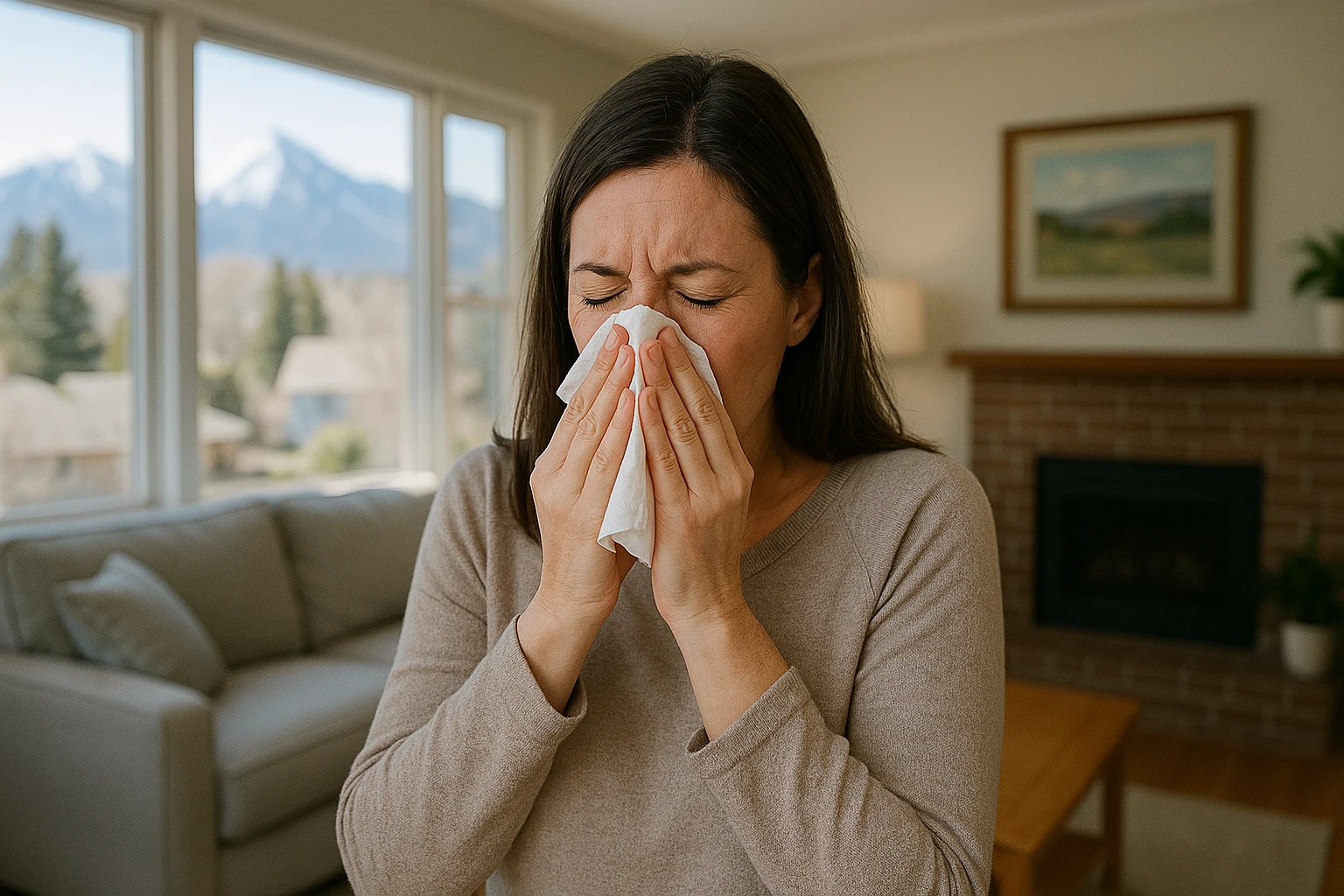Is Your Home’s Air Making You Sick? These are the 5 Indoor Pollutants to Watch For in Grand County Homes

Even if your home appears spotless and smells fresh, the air you’re breathing may still be putting your health at risk. According to the U.S. Environmental Protection Agency (EPA), indoor air can be two to five times more polluted than outdoor air—and in extreme cases, it can be up to 100 times worse.
For homeowners in Grand County, Colorado, indoor air quality is especially important. With our colder climate and longer heating seasons, homes tend to be more tightly sealed to retain heat. While energy efficiency is a good thing, this reduced ventilation means pollutants become trapped indoors, creating potential health risks for your family—especially during the winter months when windows remain closed for extended periods.
It’s estimated that Americans spend more than 90% of their time indoors, so understanding the types of indoor pollutants commonly found in mountain homes like ours—and how to reduce them—is critical for long-term health and comfort. Below, we’ll walk through five of the most common sources of indoor air pollution and what you can do about them.
1. Dust Mites
Dust mites are microscopic bugs that thrive in warm, humid environments like bedding, carpets, upholstered furniture, and even stuffed animals. While harmless in appearance, their waste products are a major indoor allergen and can trigger asthma and allergic reactions.
How to reduce dust mites:
- Wash sheets and bedding weekly in hot water (at least 130°F).
- Use allergen-proof mattress and pillow covers.
- Vacuum carpets and upholstery using a HEPA filter vacuum.
- Replace your furnace air filter monthly during heating season.
- Schedule professional duct cleaning if you notice heavy dust buildup or poor airflow.
Pro tip: Grand Lake Plumbing & Heating offers whole-home air filtration systems designed for mountain homes. Call us for details.
2. Mold and Mildew
Mold and mildew thrive in damp, poorly ventilated areas—especially basements and bathrooms. Inhaling mold spores can worsen allergies and respiratory conditions, and in severe cases, lead to chronic health issues.
Tips to prevent mold growth:
- Keep indoor humidity levels between 30% and 50%. Use a hygrometer to monitor moisture.
- Ventilate bathrooms with exhaust fans or open windows during and after showers.
- Fix plumbing leaks promptly to avoid hidden moisture buildup.
- Use a dehumidifier in damp basements or crawlspaces.
3. Carbon Monoxide (CO)
Carbon monoxide is a colorless, odorless gas produced by gas appliances like furnaces, water heaters, and stoves. At high levels, it can be deadly within minutes. Even low-level exposure can cause headaches, dizziness, and nausea.
Protect your family by:
- Installing carbon monoxide detectors on every floor and near sleeping areas.
- Testing alarms monthly and replacing batteries twice a year.
- Having your gas appliances inspected and serviced annually.
In Colorado, it’s the law to install CO detectors in homes that have fuel-burning appliances.
4. Smoke and Pet Dander
Whether it’s cigarette smoke or pet dander, both are major contributors to poor indoor air quality. Smoke contains harmful chemicals that linger long after the smoke clears, while dander (tiny flakes of skin) from pets can trigger allergies and asthma attacks.
Air quality tips for smokers and pet owners:
- Limit smoking to outdoor areas.
- Brush pets regularly and bathe them monthly (more often during shedding seasons).
- Use a HEPA filter air purifier or consider installing a whole-home air cleaner.
5. Radon
Radon is an invisible, radioactive gas that naturally occurs in the soil and rock beneath your home. It can seep inside through foundation cracks or sump pumps and accumulate to dangerous levels. Radon exposure is the second leading cause of lung cancer in the U.S. after smoking.
Given Grand County’s geology, radon is a real concern for many local homeowners. In fact, Colorado has some of the highest average indoor radon levels in the country.
What you can do:
- Buy a radon test kit (available online or at hardware stores).
- Test your basement or lowest living area following the kit’s instructions.
- If levels are 4.0 pCi/L or higher, hire a certified radon mitigation contractor.
Want to Breathe Easier in Your Grand County Home?
At Grand Lake Plumbing & Heating, we’ve been helping local families stay safe and comfortable since 1920. From indoor air quality upgrades to duct cleaning and heating system maintenance, we’re your trusted local experts.
Need help improving your home’s air? Contact Gradn Lake Plumbing & Heating today to schedule an air quality assessment or learn more about our filtration and ventilation solutions tailored to Grand County homes.
